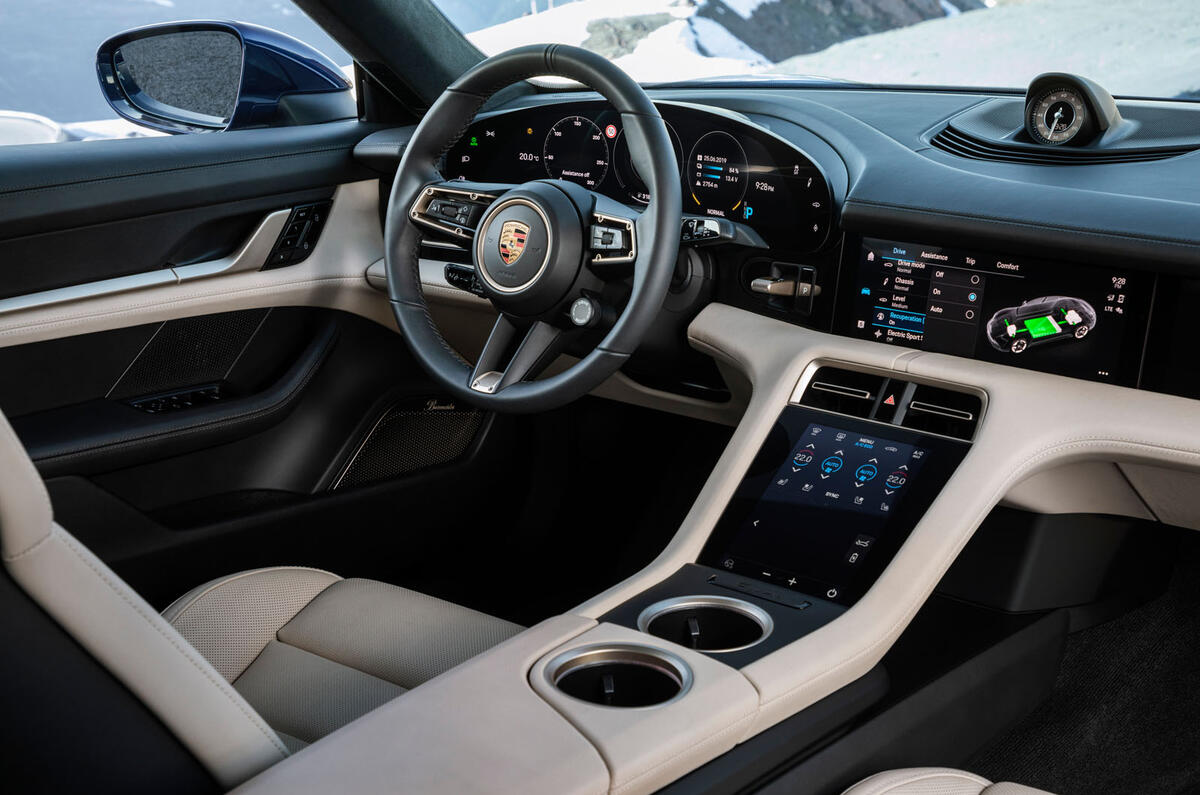Remember when Tesla landed with its outrageously overscaled central touchscreen? It was as big a statement as the firm could make that it was approaching this car-making business from the angle of a tech company rather than a legacy automotive dinosaur.
If you could overcome any scepticism over the risks of distraction that having such a large screen represented, it was addictively good to use, too. No more squinting at a screen, or prodding at buttons – this was tech in an XXL size.
Fast forward to the Taycan and you’ll note that there are three digital screens as standard, with the option of adding a fourth – yes, fourth – in front of the passenger should you feel they want their own slice of the fun.

The result is an interior light on buttons and big on touchpads. Porsche’s experts say they went this way because they felt their first electric car should be representative of the digital age, which seems perfectly logical when you consider it.
But here’s the thing, albeit caveated by the fact that during our day with the car the interior was disguised on all moving prototypes, and only shown statically in a chassis buck: thanks to all those screens, the interior had more than a hint of being a pastiche of how we expected a car of the 21st century to look back in the 1970s, rather than being any kind of a statement in regards to moving the game on again.
Time may prove me wrong, and its certainly true that Porsche’s interiors have rightly been criticised for being too button-heavy up to now, but I fear that this all-in statement of digital leadership may have sounded more logical in principle than it is in final execution.
Read more
New Porsche Taycan arrives as pivotal electric sports car​
Autocar confidential: Porsche knows how to push drivers' buttons and more
Under the skin: How haptics are making touchscreens safer​




Join the debate
Add your comment
Looks classic Porsche?
Yes, I don’t think it’s that Button/ screen heavy, I’ve seen worse, Lamborghini for one, I’m sure others could name more, and yes, the interior has that certain Porsche-ness about it, I like this interior.
Minor annoyance
As other have already stated
its fairly generic VW group, obviously the cost cutting is starting to take effect and the diversity between brands is reducing.